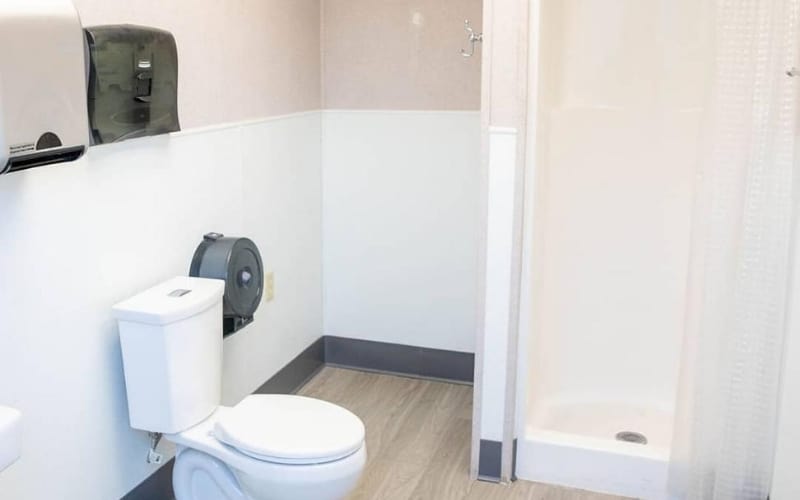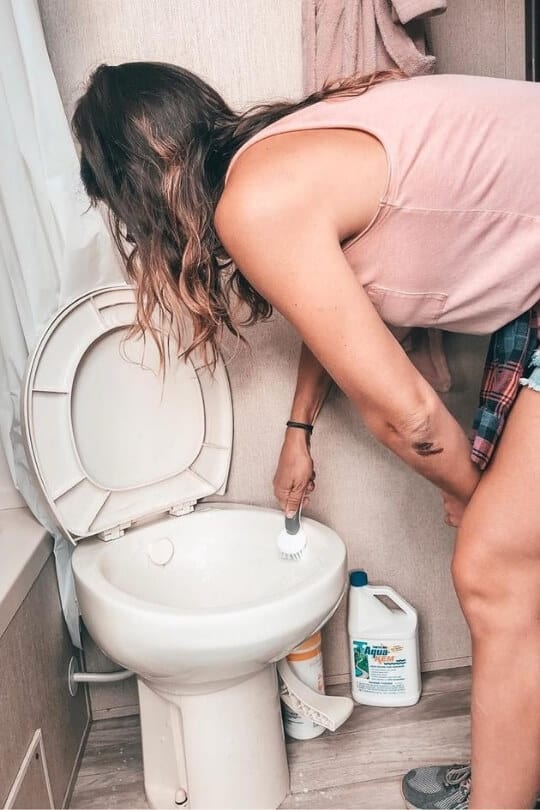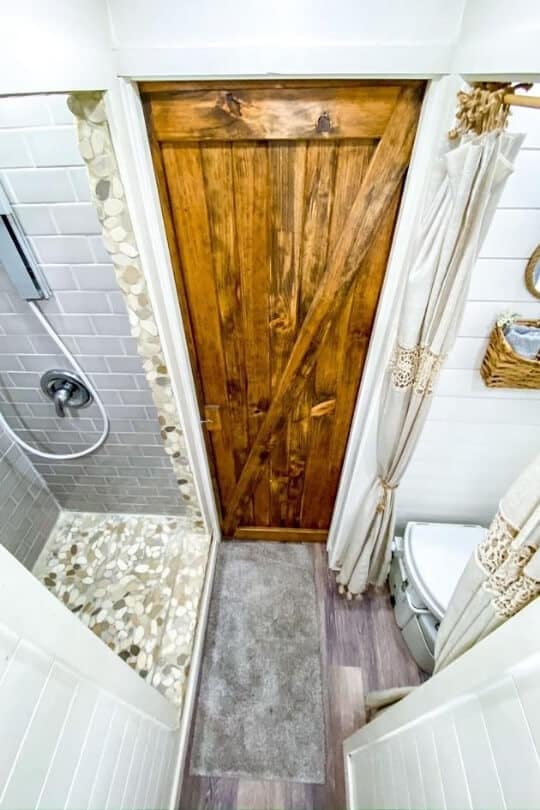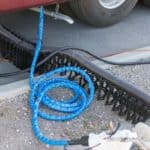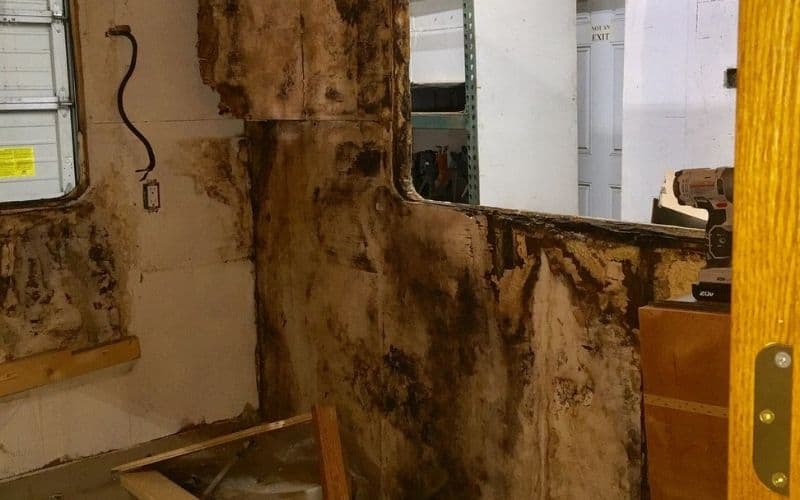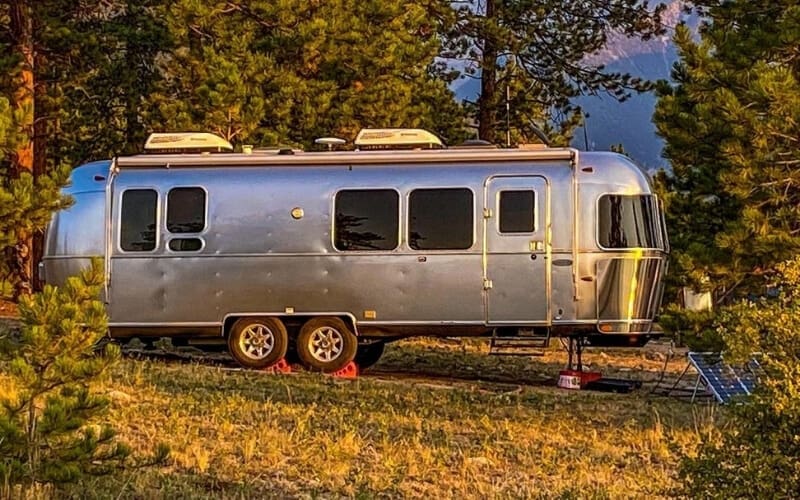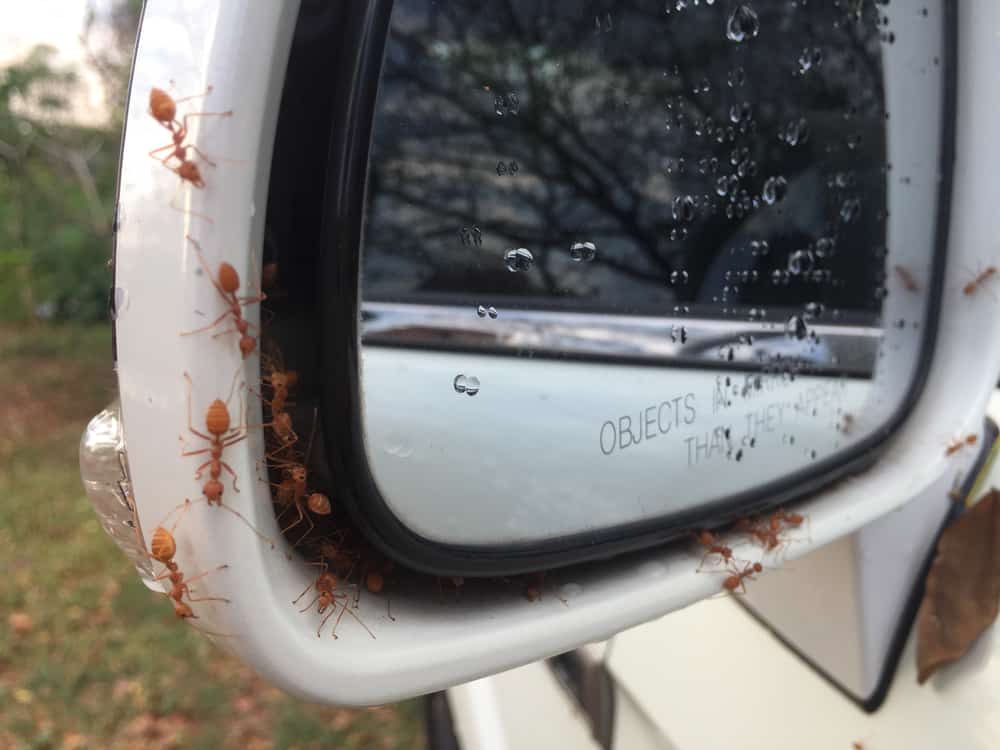When you’re on a long road trip, you want to minimize your travel time so that you can make the most out of every destination.
Stopping for bathroom breaks may be a pain, but if you’re traveling in an RV, you have a restroom at-the-ready and there’s no need to pull over at a rest stop… or is there?
Can you legally use your RV bathroom while on-the-move?
Yes! It’s both possible and completely legal to use your RV or motorhome bathroom while it’s moving, however, it is illegal to be inside a pull-behind camper like a trailer or fifth wheel unless it’s parked.
Since it’s illegal to be inside a trailer or towed vehicle while moving, you can only use the bathroom while driving in motorhomes where the driving cab is in the same vehicle as the bathroom (Class A, B, and C RVs).
That said, it’s perfectly legal for you to pull over to the shoulder of the road in order to use the bathroom in your pull-behind camper as long as the vehicle is stopped.
Just because it’s legal and possible to move around your RV and use its amenities while driving, doesn’t necessarily mean you should. If you do, you should also take extra precautions for safety.
In this article, I’ll go over all of the necessary steps to take when using the bathroom or taking a shower in your RV while it’s on the move, as well as providing some safety tips.
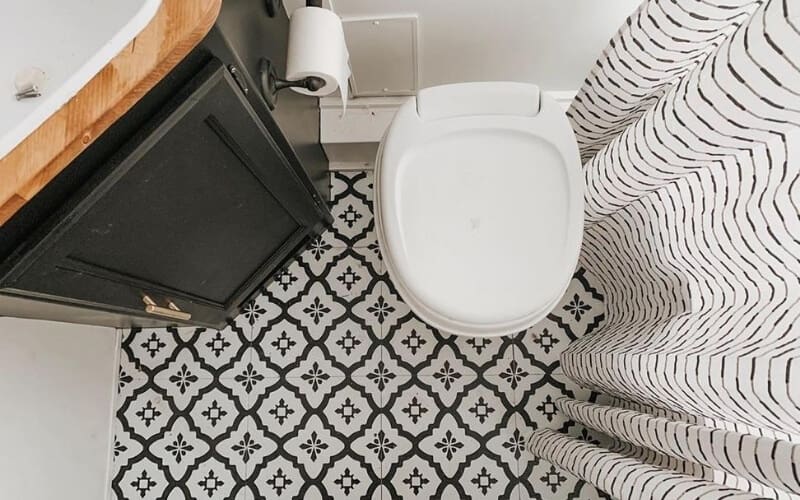
Tips for Using Your RV Bathroom on the Road
The first thing you should remember when using your RV toilet at any time — driving or parked — is that the septic system and the toilet itself are different than the one you have at home.
Not only do RV toilets have different flushing mechanisms and waste systems, they may need a little extra care and maintenance and it may be needed more often.
Be Careful What You Flush
While you don’t need RV-safe toilet paper (this stuff is usually pretty expensive), you should be sure the toilet paper you use is septic-safe.
Never flush anything other than human waste and septic-safe toilet paper.
Feminine hygiene products, trash, paper towels, ‘flushable’ wipes, and any other item should never be placed in the RV toilet, since it’s almost certain to cause a clog or another issue, or worse, damage the septic system.
RV toilets are already more susceptible to clogs than normal residential toilets.
A good rule of thumb is to keep a trash receptacle in the RV bathroom to provide a small and easy-to-access place to put trash and other items that should not be flushed.
Prepare to Flush
You won’t be able to use the RV toilet without turning on the water pump, whether you need to go to the bathroom while driving or parked at your campsite.
Since the RV’s water pump only requires a small amount of power (12v), you won’t need to turn on the generator, but you won’t be able to flush without the water pump being on.
When you’re ready to use the toilet, you only need to add a small amount of water (about half a cup or even less) to the toilet bowl if you are going number-two.
Liquid waste will drain directly when you flush, but solid waste might need some extra help to clear the bowl and drain into the septic system.
To conserve water and use a minimal amount of water, just step on the flush pedal briefly to “fast flush”.
Keep Things Clean
Nobody wants to leave skid marks in the bottom of the bowl — it’s embarrassing and gross. There are two popular ways to keep your RV’s toilet bowl clean.
First, keep a toilet brush in the bathroom so that you and your family or guests can use it as needed to clean up any marks in the bowl.
Another good rule of thumb is to use the RV Toilet Cross method when going number-two: take two short strips of septic-safe toilet paper and make a cross over the drain in the bowl.
After you go, the waste will sit inside the cross and on top of the drain, so that when you flush, everything leaves the bowl without leaving any streaks or skid marks.
If you’re interested in learning more about your RV’s septic system, such as the average size of your gray and black water tanks or how to empty them, check out our recent article on the Typical RV Holding Tank Size.
Tips for Using Your RV’s Shower on the Road
It’s probably more common to need to use the toilet in your RV as you travel down the road to your next destination, but it’s also legal and possible to use your RV shower as well.
If you just finished a hike or some other adventure and you’re a bit sweaty or grubby, you may want to have a quick shower before arriving at your next destination.
Luckily, although it’s a bit tricky and not as safe as showering while your RV is parked, you can take a shower while on the move.
However, there are some things you should do to make your experience safer.
Add Shower Floor Grips to Increase Stability
The shower floor is slippery enough when wet, but when your RV is moving down the road, the likelihood of slipping or falling while showering is increased.
You can mitigate the risks of hurting yourself if you add a plastic mat or shower floor grips to help you shower more safely.
Install a Bar or Handles to Give Yourself Something to Grab
In the event that your RV goes over a bump or has to travel over uneven terrain while you’re in the shower, it’s a good idea to have something to grab onto in order to stabilize yourself to avoid injury.
Shower bars and handles are relatively inexpensive and easy to install, so that you have a handhold to grab for extra balance.
Most won’t damage your RV’s walls either, and offer an extra perk for older guests, making your shower more comfortable and safe to use even when parked.
Shower Fast, Shower Safe
No matter how many precautions you take, the road may still be too uneven or bumpy to shower safely.
However, if you really need to wash up, try to make your shower as quick as possible (this will also help conserve water) or consider sitting down to shower.
Steps to Shower In Your RV While Moving
In addition to keeping safety in mind, there are some extra steps to take to shower when your RV is on-the-move:
Conclusions About Using Your RV Bathroom While Driving

Just because you can use the toilet or shower in your RV while driving, doesn’t mean it’s safe or that you should.
Try to minimize using the bathroom while on the move, since doing so can create other hassles such as:
- Filling up your gray or black water holding tanks more quickly (requiring more frequent dumps)
- Causing the tanks to overflow and creating gross messes while on the move
- Increasing the risk of injury to yourself or damage to the interior of your RV if you slip or fall
- Using valuable power to operate the toilet or water pump and heater
- Using up your propane more quickly (to power the water heater for a shower)
Remember that it’s not easy to maneuver around your RV while it’s moving, and it’s best to stay in and get back to your seat as quickly as possible to travel safely.
If you must use the toilet or shower while on the move, do so with extra safety precautions to avoid injuring yourself.

